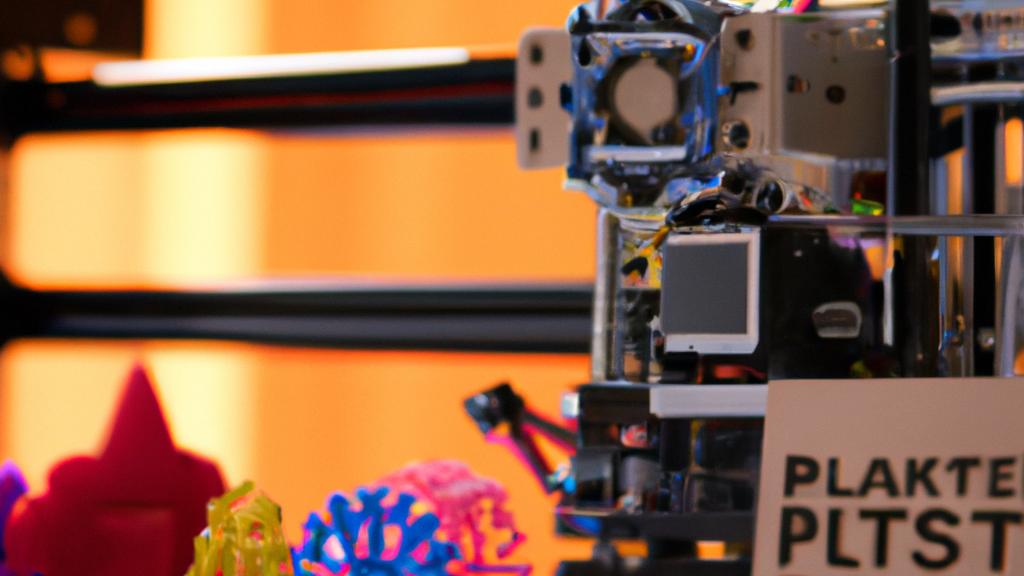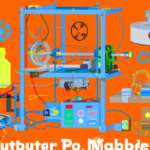
Introduction: Introduce the concept of 3D printing and its importance in various industries.
3D printing is a groundbreaking technology that has transformed various industries, from healthcare to aerospace. Essentially, 3D printing refers to the process of creating three-dimensional objects from a digital design by laying out successive layers of materials until the object is completed.
3D printing has significantly changed how we approach manufacturing, prototyping, and design. Previously, creating a prototype or a model would require time, significant resources, and a lot of manpower. With 3D printing, businesses can save time, money, and other resources by creating prototypes through an automated process that is fast and efficient.
The power of 3D printing technology is evident in how it has transformed important industries. Healthcare practitioners, for instance, are now using 3D printing to create medical implants, prosthetics, and even surgical tools. Aerospace industries are also using 3D printing to create airplane parts that are lighter, stronger, and more cost-effective than traditionally manufactured parts.
As you can see, 3D printing has far-reaching implications in various industries. However, there is still room for improvement in this technology, and this is where Prusa comes in. Prusa is a groundbreaking 3D printing technology that is revolutionizing the way we approach 3D printing. In the next section, we will explore what Prusa is and how it is changing the game.
What is Prusa?: Provide a brief overview of Prusa and how it is revolutionizing 3D printing.
Prusa is a relatively new 3D printing technology that is changing the way people perceive 3D printing. At its core, Prusa is a type of Fused Deposition Modeling (FDM) technology, which is a common 3D printing technique that lays down plastic material layer by layer until the 3D object is completed.
So, what sets Prusa apart from traditional FDM printers? One significant difference lies in its construction. Prusa printers are built with a self-replicating design, which means that they can replicate many of their parts, making repairs more accessible and more cost-effective. This feature is a game-changer, given that traditional 3D printers tend to be costly to repair or replace parts.
Another feature of Prusa that sets it apart is the open-source design of the technology. The open-source aspect of Prusa means that users can modify the 3D printer and its software to fit their specific needs. This feature allows for a more personalized, flexible, and intuitive approach to 3D printing.
Moreover, Prusa uses a unique and innovative printing process that allows for improved speed and accuracy. Prusa’s printing speed is almost twice as fast as that of traditional 3D printers, and this is because of its robust frame design and the use of a direct drive extruder. The direct drive extruder is a critical component of Prusa, and its design ensures that the printer can produce exceptional quality prints that are highly accurate.
In summary, Prusa’s unique features, including its self-replicating design, open-source nature, and innovative printing process, have the potential to revolutionize the way we approach 3D printing. The next section will explore some of the benefits of Prusa, which give it an edge over traditional 3D printers.
Features of Prusa: Highlight the key features of Prusa that set it apart from traditional 3D printers.
The features of Prusa that we explored in the previous section translate into several benefits that set it apart from traditional 3D printers.
One of the main benefits of using Prusa is improved printing speed. Because of its direct drive extruder, it can produce printed objects faster than other FDM printers, reducing overall printing times and making the process more efficient.
Another benefit of using Prusa is its high level of accuracy. The direct drive extruder ensures that the printer can produce highly accurate prints with a fine level of detail. This level of accuracy is a significant advantage, particularly for intricate designs that require high precision and fine detail.
Additionally, Prusa’s use of open-source design and the ability to modify its software to meet specific needs is a substantial benefit. The open-source aspect of Prusa allows users to tailor the 3D printer and its software to their unique needs, giving them greater flexibility and control. This feature can save users time, money, and resources while also providing a more personalized 3D printing experience.
Moreover, Prusa’s self-replicating design enables easy repairs and maintenance. This feature ensures that the printer is more cost-effective to repair and maintain in the long run. Traditional 3D printers, on the other hand, are more difficult and costly to repair due to the complexity of their design.
In summary, Prusa offers several benefits, including improved speed, accuracy, flexibility, and cost-effectiveness, making it the go-to choice for any business or individual looking for a reliable and efficient 3D printing solution.
Benefits of Prusa: Discuss the benefits of using Prusa for 3D printing, including improved speed, accuracy, and efficiency.
The benefits of Prusa are numerous and significant, making it a game-changer in the world of 3D printing. Let’s take a closer look at a few of the benefits of using Prusa.
One of the most significant benefits of Prusa is its ability to create complex designs with a high level of detail. Traditional manufacturing methods can be limiting, but with Prusa, businesses and individuals can create intricate designs that were previously impossible to produce. For instance, medical practitioners can create prosthetics that are customized to a patient’s unique needs, leading to better patient outcomes.
Prusa’s speed and accuracy are also game-changing features. With faster printing times, businesses can increase their productivity and output, leading to increased efficiency and profitability. Additionally, Prusa’s high level of accuracy means that businesses can create prototypes that are highly accurate and close to the final product, leading to better product development and design.
The open-source nature of Prusa means that businesses and individuals can modify the 3D printer and its software to fit their needs. This flexibility means that businesses can use Prusa for a range of applications, making it a versatile and cost-effective tool.
Finally, one of the most significant benefits of Prusa is the self-replicating design. This feature means that businesses and individuals can create new Prusa printers using existing machines, saving money and resources in the long run. This feature also makes repairs and maintenance easier, leading to greater cost-effectiveness in the long run.
In conclusion, Prusa offers several benefits that set it apart from traditional 3D printers. From increased speed and accuracy to greater design flexibility and cost-effectiveness, Prusa is revolutionizing the way individuals and businesses approach 3D printing.
Conclusion: Emphasize the significance of Prusa in the present and future of 3D printing technology.
Prusa is a game-changer in the world of 3D printing, and its innovative features and benefits have made it a disruptive force in various industries. As the use of 3D printing continues to expand, it is becoming increasingly clear that Prusa is the go-to choice for those who want to stay ahead of the curve.
Through its self-replicating design, Prusa enables businesses and individuals to create more cost-effective and efficient 3D printing solutions. The open-source nature of the technology means that users can tailor the 3D printer and its software to their unique needs, resulting in a more personalized and flexible approach to 3D printing.
Moreover, Prusa’s innovation has significantly improved the speed and accuracy of 3D printing, leading to increased productivity, better product development, and higher quality outputs. The technology’s ability to produce detailed and complex designs has expanded the possibilities of what can be achieved through 3D printing, leading to new discoveries and advancements in various fields.
In conclusion, Prusa is a revolutionary 3D printing technology that is transforming industries from healthcare to automotive. Its innovative features, cost-effectiveness, flexibility, and faster printing times make it the leading option for anyone looking for an efficient and reliable 3D printing solution. It’s clear that Prusa is here to stay, and we can expect to see even more developments and advancements in the technology as it continues to reshape the world of manufacturing and design.







3 thoughts on “Revolutionizing 3D Printing with Prusa”